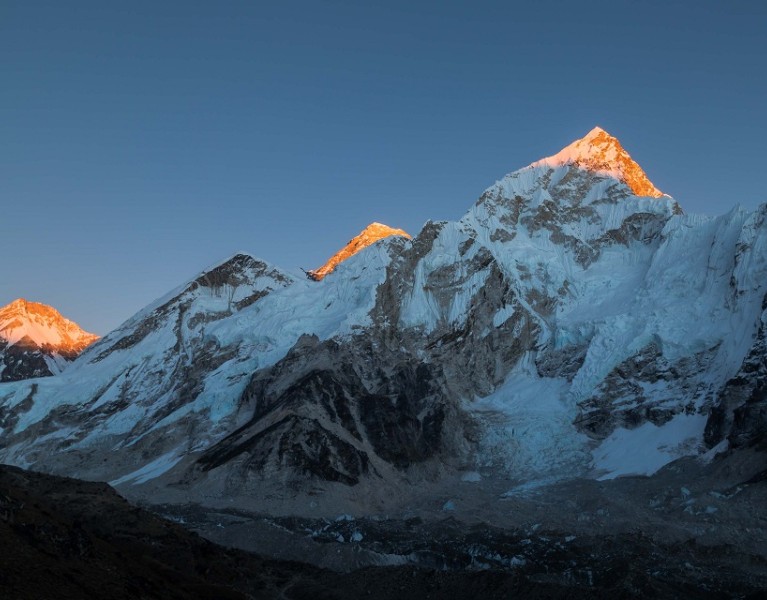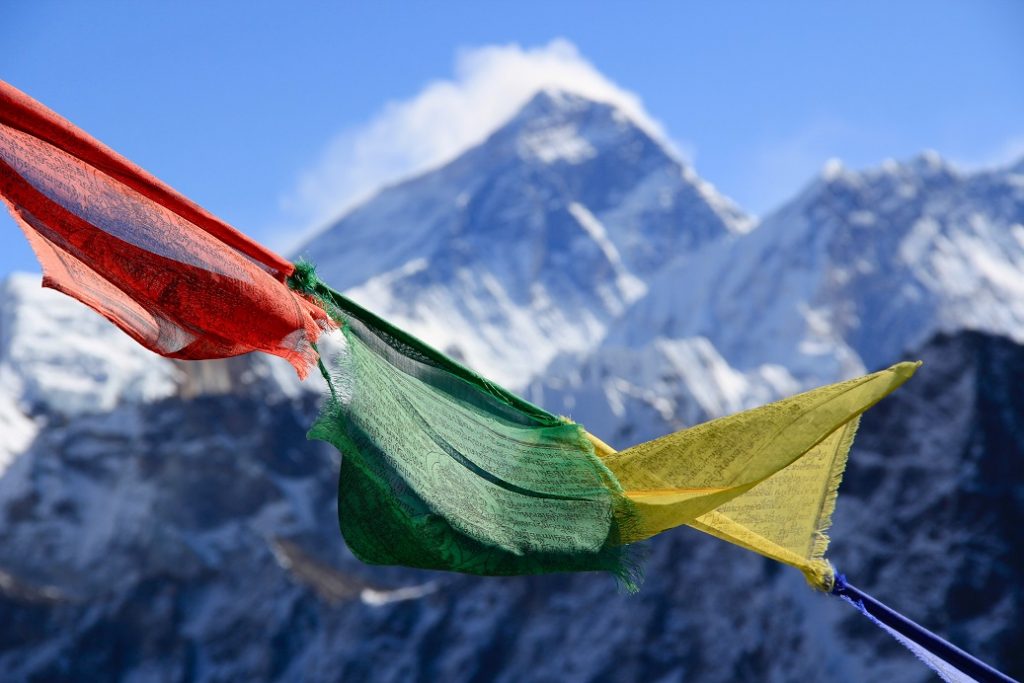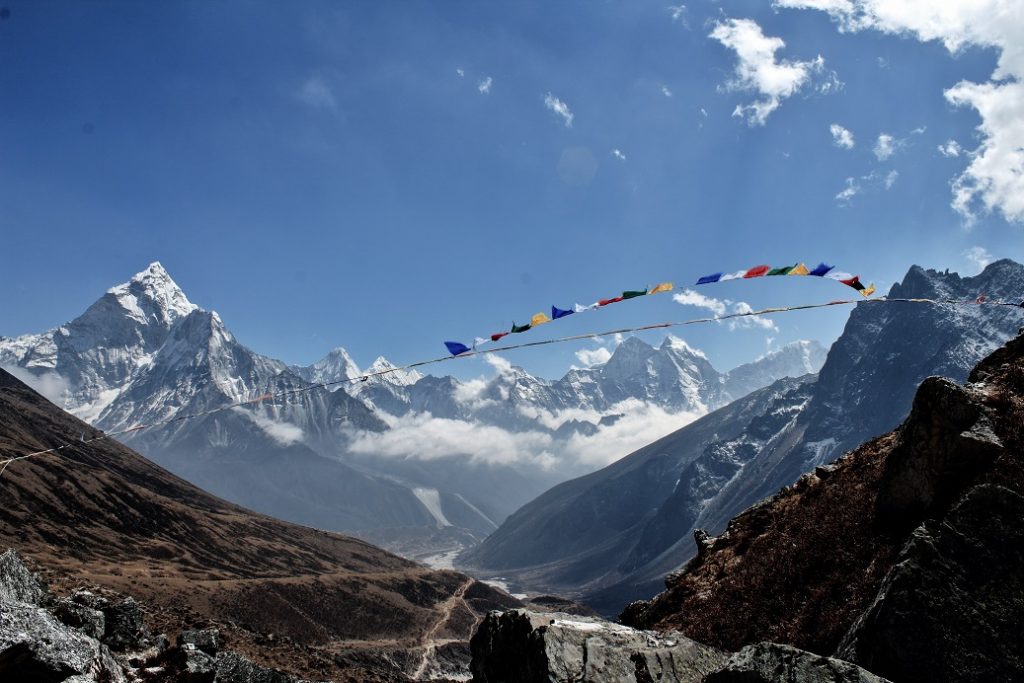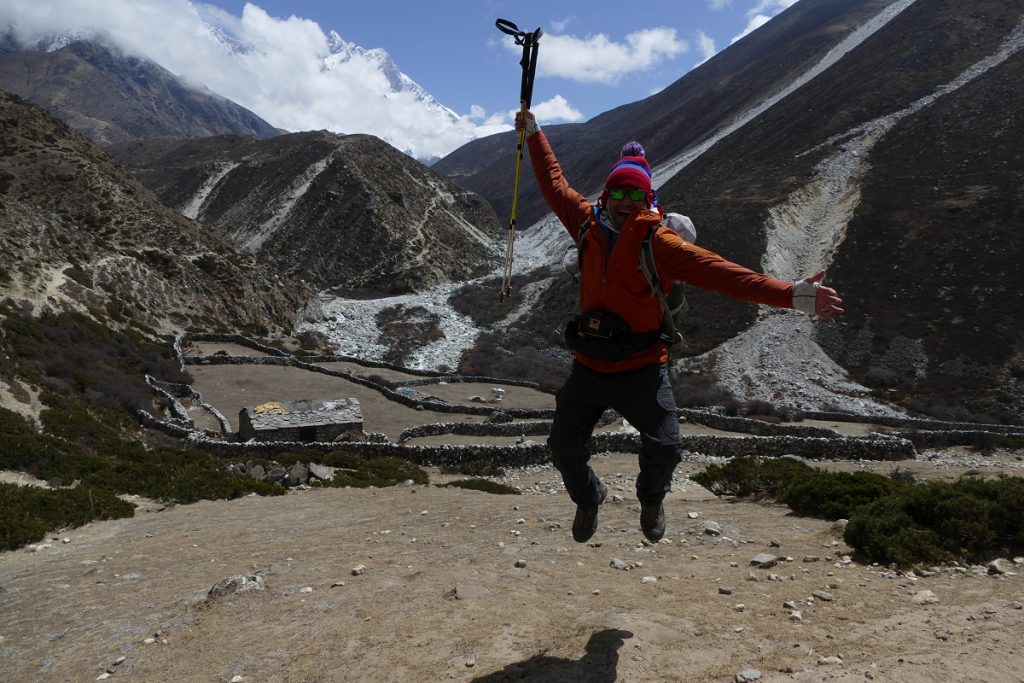
Everest 2019: Low-Altitude Hysteria, High Altitude Reality
Table of Contents [Show]
You've seen the photo: Everest climbers lined up front-to-back on the knife-sharp ridge before the Hillary Step. You've read the damning and sensational stories from social media and Western mainstream news outlets: It's like Lord of the Flies up there! Social media influencers and elite rich are only in it for the selfies! Too many crowds! Nepal's being irresponsible and greedy! First-class helicopter rides to Base Camp? In the wake of the tragic deaths of 11 climbers, these buzz-phrases found their way into articles about the 2019 climbing season. Until the next big story, those whose climbing experience is limited to cleaning gutters in the fall are asking, "Has the mountain's commercialization detracted from the glory of the summit? Has the uptick in climbers reached critical mass? Has Everest jumped the shark?" I guess that depends on whom you ask.
Nobody Said It Would Be Easy
"There is no firm count of the exact number of climbers that have died on Mount Everest, but as of 2016, about 280 climbers have died, about 6.5 percent of the more than 4,000 climbers who have reached the summit since the first ascent by Edmund Hillary and Tenzing Norgay in 1953." Steward Green, "Death Rate of Mount Everest Climbers", Liveaboutdotcom (updated Jan 2018)
This year ranks as the fourth deadliest Everest season, at least in terms of raw numbers, but also the year with the highest number of successful summits: 891, at least by mountaineer and long-time Everest chronicler Alan Arnette's count. But summiting doesn't mark success. The majority of deaths on Everest occur after the short celebration at the top of the world. This is when climbers are the most vulnerable to heart attacks, seizures, altitude sickness. High-altitude pulmonary edema (HAPE) and high-altitude cerebral edema (HACE). Depleted oxygen canisters, and drained physical and mental reserves. Even if their expedition leaders run a disciplined acclimatization program in the weeks leading up to summiting, altitude and exhaustion can and will kill fit and experienced climbers, especially those who spend more than 24 to 72 hours in the Death Zone. Which, in case it's not obvious, is so called because the human body isn't supposed to function on less than a third of its normal oxygen intake. Climbers who depart Base Camp for Camp IV/the South Col at 8016 meters are well aware of the risks, and how they increase exponentially as they progress up the mountain. They understand that evacuation escorts down the mountain are unlikely at Camp IV if the weather turns bad, and even in good conditions, the terrain on the way to the summit may prohibit their teammates from carrying them to safety. Having said that, competition among guide companies may mean they're not vetting their clients as strictly as they could, and advertise Everest expeditions with an "anyone can do it" attitude. Starry-eyed climbers might not have a realistic understanding of the physical training and skill building required, or they may just believe what fits their narrative. "I can do it!"

Is It a Route, or a Southern California Highway?
On April 18, Ang Tshiring Sherpa, former president of Nepal Mountaineering Association, acknowledged to the Kathmandu Post that with the large number of climbers registered for the 2019 season, a traffic jam would be a concern. "It will depend on weather. If the weather does not behave well, all climbers could scramble to climb the peak during a short weather window causing a traffic jam," he said. That's what happened back on May 18, 2012, when approximately 150 climbers made their bid for the summit. This glut of climbers caused a traffic jam that, until this year, was referred to as a really big deal. Such a weather window was forecast for May 22-24, 2019 after a week of bad weather. During this window, 250 climbers scrambled for the summit, causing queues at the Khumbu Icefall well below the Death Zone, and at the Hillary Step near the peak. Critics say that the extra time spent in the Death Zone awaiting their turn to summit increased the strain on climbers' bodies. Was this bottleneck the result of general overcrowding? Too narrow of a climbing window? Guides pushing their inexperienced clients too hard? Maybe a little of each.
Overcrowding or Incompetence?
It's safe to say that Damien Francois is aware of Everest's risks, and if anyone knows about the self-imposed pressure to finally "make it," it's him. He summited this season after environmental conditions or geological disasters thwarted each of his previous four attempts: The 2014 avalanche on the Khumbu Icefall that killed 16 Nepali support climbers, and the 7.8 earthquake in 2015 that set off another massive avalanche and ice flow, killing 20 people in Base Camp. Bad weather stopped him in 2017, and in 2018, searing heat from sunlight bouncing off the Western Cwm transformed the snow and ice into, in his words, a parabolic mirror, making it too hot for climbers bundled up in their high-altitude, sub-zero climbing suits. He's had to make the difficult decision to turn back when he felt the risks were just a hair too great, and he's relied on his team leaders to help him evaluate the risks. From the way Francois described the 2019 season, inexperienced guides aren't willing to say "no" to their clients... either when they accept their booking fees, or when the clients should be turned back.
"The Nepal government must work with mountaineering companies to ensure climbers have the requisite skill to be there. Certificates won't work because they can be bought. Ultimately, the responsibility lies with the climbers themselves." Damien Francois, "Because We Are There", Nepali Times, May 29, 2019

The issue this season, he wrote in the Nepali Times, was less about overcrowding than it was about inexperienced climbers holding up the queues. "Many of them were on short ropes literally being dragged by their Nepali guides, even on semi-flat glacier sections. I saw an Indian client being slapped by a guide at the South Col. Another Indian man was collapsing one hour into the Khumbu Icefall." In his June 6, 2018 article "A Guide's Perspective on Everest" for ExplorersWeb, Ryan Waters backs up Francois' accounts of guides short-roping and all but carrying their inexperienced clients, but he also brushes off the hype triggered by Nirmal Purja's viral photo. "As an Everest guide, I've learned that you always have to take media reports with a grain of salt. For example, it is true that foreign climbers received more permits this year, but not by an overwhelming amount. Lines of climbers did obstruct some parts of the route for a couple of days, but the never ending conga line of wannabes along the entire summit route simply never happened." Waters also stated that climbers could pass slower groups at any time, and that, in his opinion, "the vast majority of Everest climbers this season had a positive experience." But he did offer the disclaimer that, as a guide, he has a dog in the fight.
What About Government Regulation?
Nepal's Ministry of Tourism and Civil Aviation does not intend to place a cap on climbing permits, nor do they have plans to impose skill requirements for applicants. Presently, the only qualifier, other than the $11,000 fee, is a doctor's bill of health to indicate fitness to climb—a vague endorsement that doesn't address extreme conditions. "Most permit rules are created by country tourism departments, which causes a conflict between a desire to bolster the tourism industry and the safety of climbers on peaks." wrote Julie McLaughlin in her June 3 piece Deaths on Mount Everest Highlight Just How Inconsistent Mountain Climbing Permits Are for Business Insider. Everest permits and related tourism revenue earn Nepal—one of the world's poorest countries—the US equivalent of $300 million each season. As compared to other countries with bucket-list peaks, Nepal has by far the highest permit fees, but by no means the worst standards for qualifying applicants. China governs Everest's Tibetan (north) side, and has cut back its permits by one third—fewer than 300—this year, a move largely motivated by cleanup efforts on the mountain. But other than insisting that all expeditions be led by an experienced guide, the bar isn't set any higher on their side of the fence. Everest's standards are no worse than those in other countries with other bucket list peaks, and none of these directly address climber competence or fitness. India, which sets the bar the highest, recommends that guide teams include medics with high-altitude training and medical clearance certificates, but, as McLaughlin reports, the country only requires that leaders "be older than 25, qualified in advanced mountaineering, and have participated in climbs over 6,400 meters." We don't have an 8,000 m peak here in the U.S., but we do have Denali, the third highest mountain (20,310') of the Seven Summits. Denali is often regarded as the second most difficult after Everest due to its glaciers, crevasses and extreme weather. The National Park Service recommends climbers have prior experience on this terrain, but their only requirements? Sign up 60 days in advance, use an NPS-approved guide, and slap down two hundred bucks. And off you go!

Keeping Things In Perspective
If Nepal (and China, after they revert to their usual permit numbers) won't self-regulate—and Nepalese professional climbing associations are beginning to make noise—who's supposed to step in? Who will blink first, China or Nepal? In terms of issues arising from unqualified climbers and guides causing crowding issues, Damien Francois probably said it best: The responsibility lies with the climbers. There are too many avenues for research out there, and anyone willing and able to shell out tens of thousands of dollars and dedicate two months away from their lives for a summit bid should at least be capable of finding a reputable guide company. As long as there are customers willing to pay incompetent guide teams, there will be guide teams willing to take on weak, unprepared climbers. As for those who clogged the route, struggling veteran climbers contributed to the slowdown, too. Anything can happen at 29,029, including perfect conditions. Featured image by howling red.


